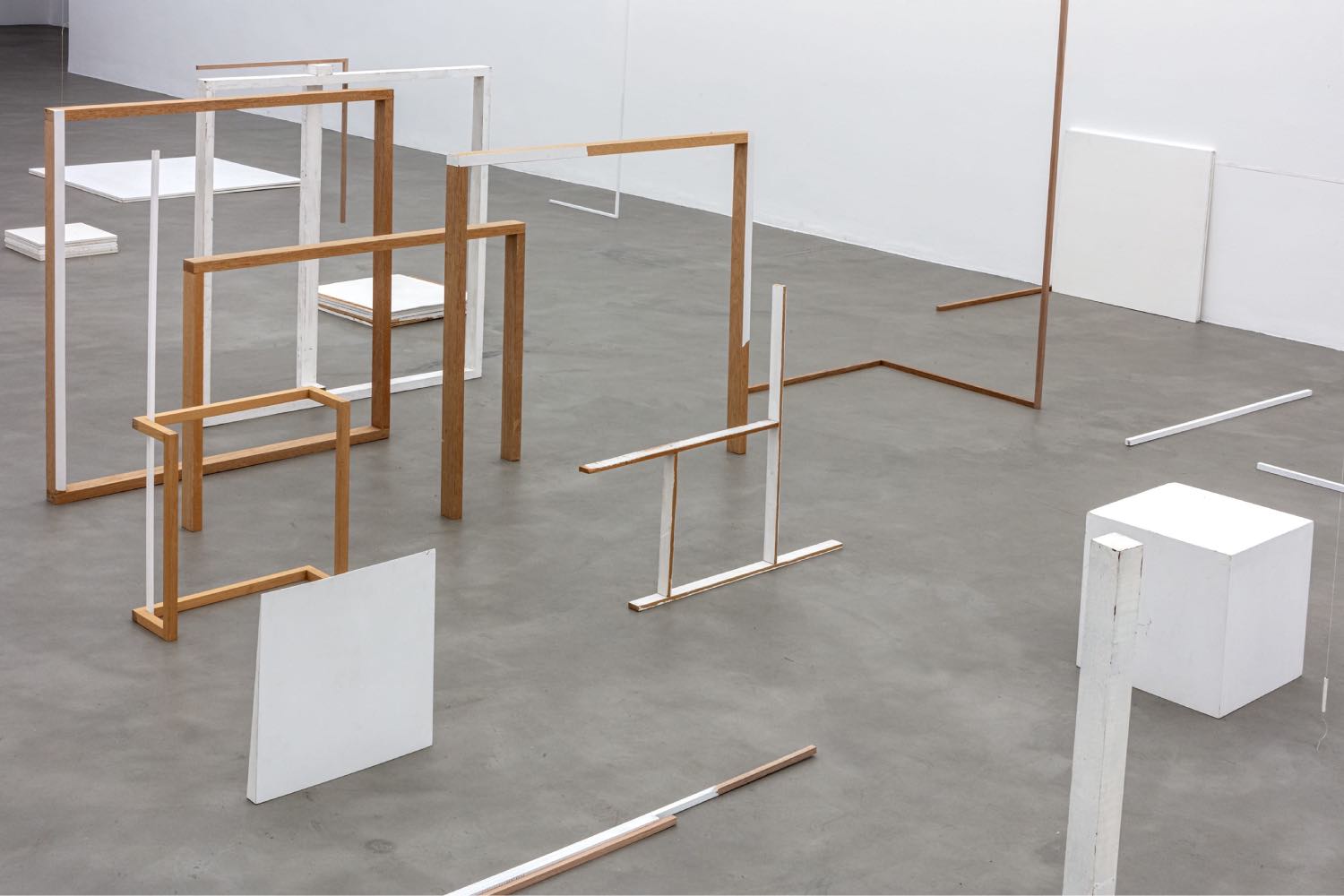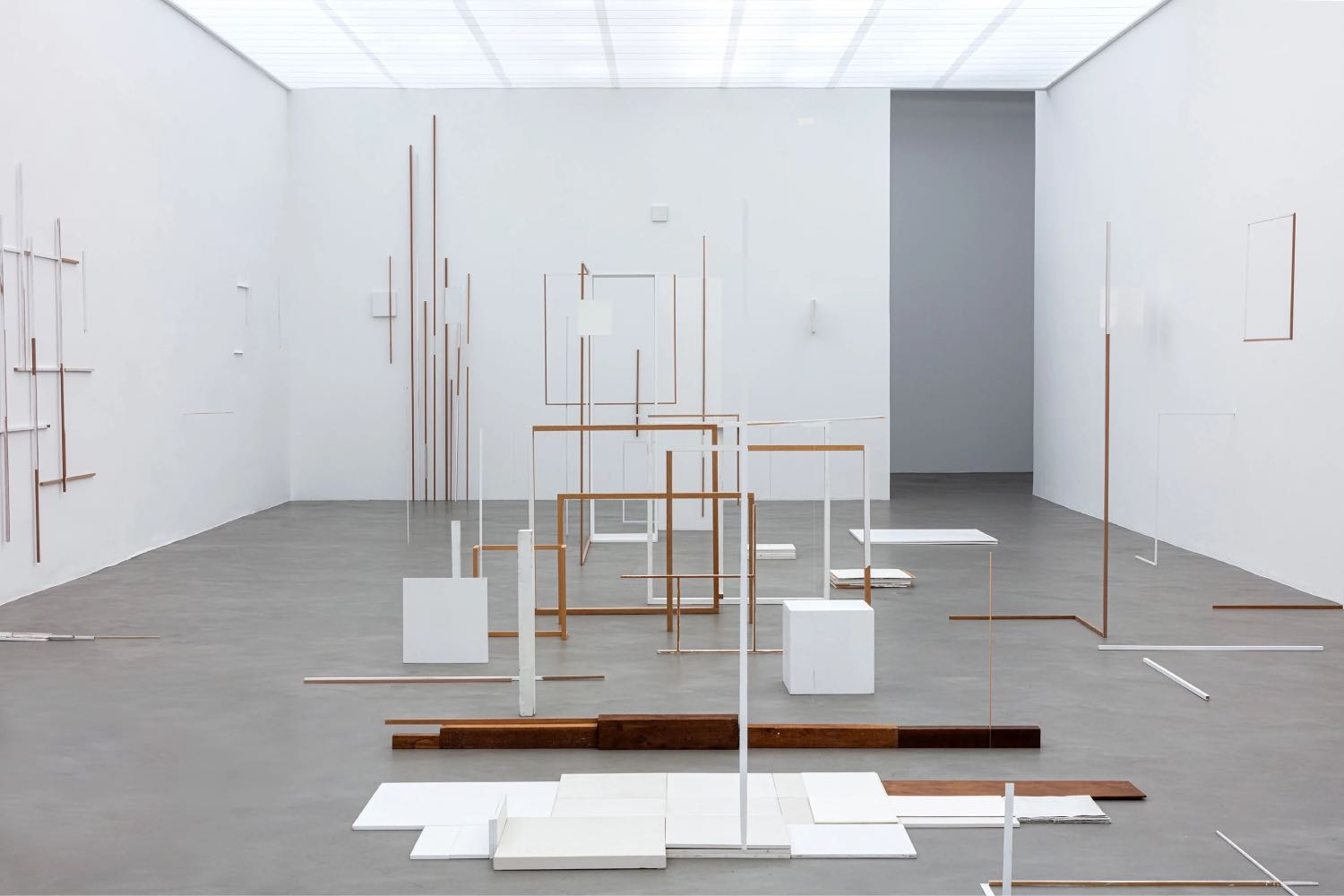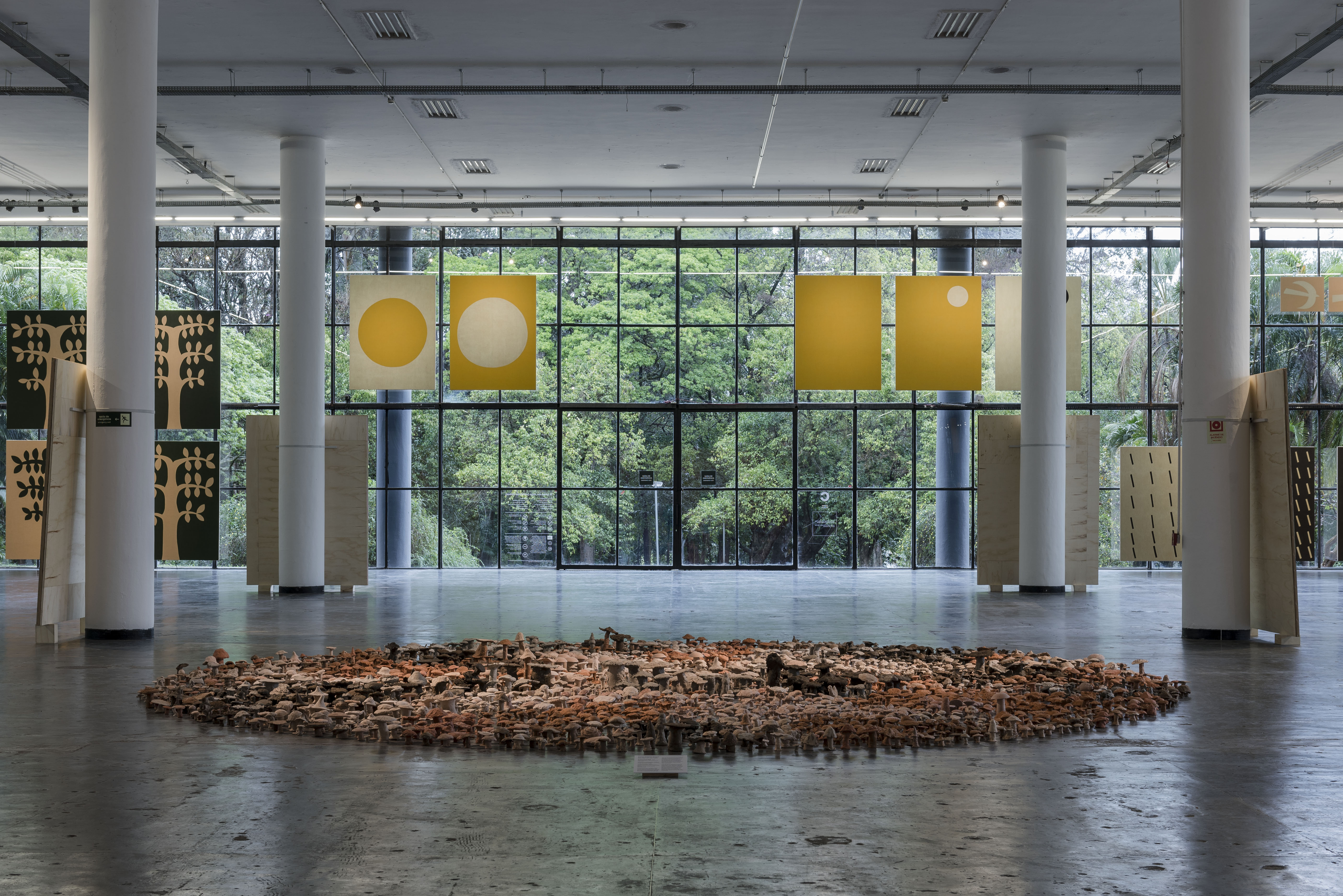Upon entering the exhibition space, I was engulfed by a stark whiteness. The effect wasn’t dued to the intensity of the lights, which are exquisitely dimmed and uniform, but rather as if silence could be seen. It felt like I was confronting a minimalist chimera that both paralyzed and dazzled me. At first glance, Fernanda Gomes’s solo show at Galeria Luisa Strina induces a shifted sensorial circuit that visually mimics muteness.
Gradually, the room and the works – purposedly almost indissociable from one another – become noisy, teeming with interpenetrable elements that, by overlapping and intersecting, create endless and unmuffled dialogues among themselves. The artworks vary from volumetric structures of wooden slats with carefully rounded tenon joints and hollow hand-painted quadrangular prisms to spatial-planar experiments with ubiquitous materials such as canvas, fabric, and paper gently folded, glued, or taped. They present an obsessive chromatic palette that varies in uncountable temperatures and shades of white or maintains the raw and natural aspects of the wood. As the body moves through the space between the objects, they rise from or lay on the floor, hang on the walls, and swing from fine threads attached to the ceiling. There is no clear indication if they are a compendium of individual aphorisms or if they constitute a single installation. In hindsight, I realized I was inside an autonomous linguistic system. Gomes’s exhibition was not only about form but also about language.
One of the central elements of the show is the light ceiling, functioning as a stage. The large exhibition room at Galeria Luisa Strina had its recognizable brutalist exposed concrete waffle slab ceiling screened by a large panel of white parchment paper, creating a vast plane of diffused light. The membrane’s modular and uniform aspects evoke a spatiality tending towards the absolute, eliminating shadows and offering only penumbra suggestions that certain works project onto sections of the walls. It evenly bathes the artworks with precise temperature and intensity, emphasizing the actual existence of objects that challenge abstraction while accentuating their formal specificities. There is an intention to immerse the observer into a mental and physical space as free as possible for experience, erasing the distinction between thought and action.
In a way, Gomes opposes the usual and inattentive ways of exhibiting art pieces, where works – mainly sculptures – are illuminated by directional lights that create multiple, distorted, and hallucinating shadows. Gomes first employed this lighting setting in the notable group show Is This Art?,” curated by Amelia Arenas in 1998 at the Kawamura Memorial Museum and the Toyota City Museum of Art in Tokyo. Gomes had a dedicated room measuring four by four meters for her work and chose to cover the ceiling with warm-white silk for light diffusion. The decision directly references to the illumination of European pinacothecas before the invention of artificial light, where skylights on the ceiling provided natural light diffused by large panels of cloth — as still seen in Monet’s Water Lilies at Musée de L’Orangerie, in Paris, for example. This approach contrasts sharply with her 2012 solo show at Museu de Arte Moderna do Rio de Janeiro, where Gomes respected the modernist aspects of the building designed by Affonso Eduardo Reidy, incorporating exposed concrete and the black rubber flooring, resulting in a visually dark exhibition.
In an autobiographical timbre, the works showcase the artist’s relations with objects and forms over time in a meticulous and meditative analysis that is not only contemplative but also experiments and interferes with their chronological unfolding. The decision to forgo titles for both the show and the works underscores Gomes’s belief in the expressive autonomy of the visual arts, defying the categorical and scientific organization of the world where everything must have a name.
Gomes’s concern with continuity and sequence as thinking tools is closely related to the manipulation materials: shaping, cutting, gluing, taping, painting, tying, and folding. This includes doing, redoing, undoing — playing nonlinearly with the principles of continuity. By incorporating reversibility in creating the works and merging doing and thinking in a single ambivalent stream, the artist prominently uses masking tape as a physical artifice in this show. In doing so, she questions what seems to be an ephemeral solution, opposing the polished and artificial notion that the “finished thing” is not compatible with life in its reality. Some elements, such as wooden slats hand-coated with white paint in a non-uniform way, are deliberately interrupted, promoting an understanding of incompleteness and openness as teleological contingencies.
Gomes inquires whether, instead of proposing overwhelming arrays of concepts and mental summons, we could reach the core questions of materiality and poetics by focusing on the recognizable operations of things –– not by creating universalist conceptual systems but through physical interactions, similar to Wittgenstein’s approach to language. Thus, the function of a form is its own use within a relational system.








